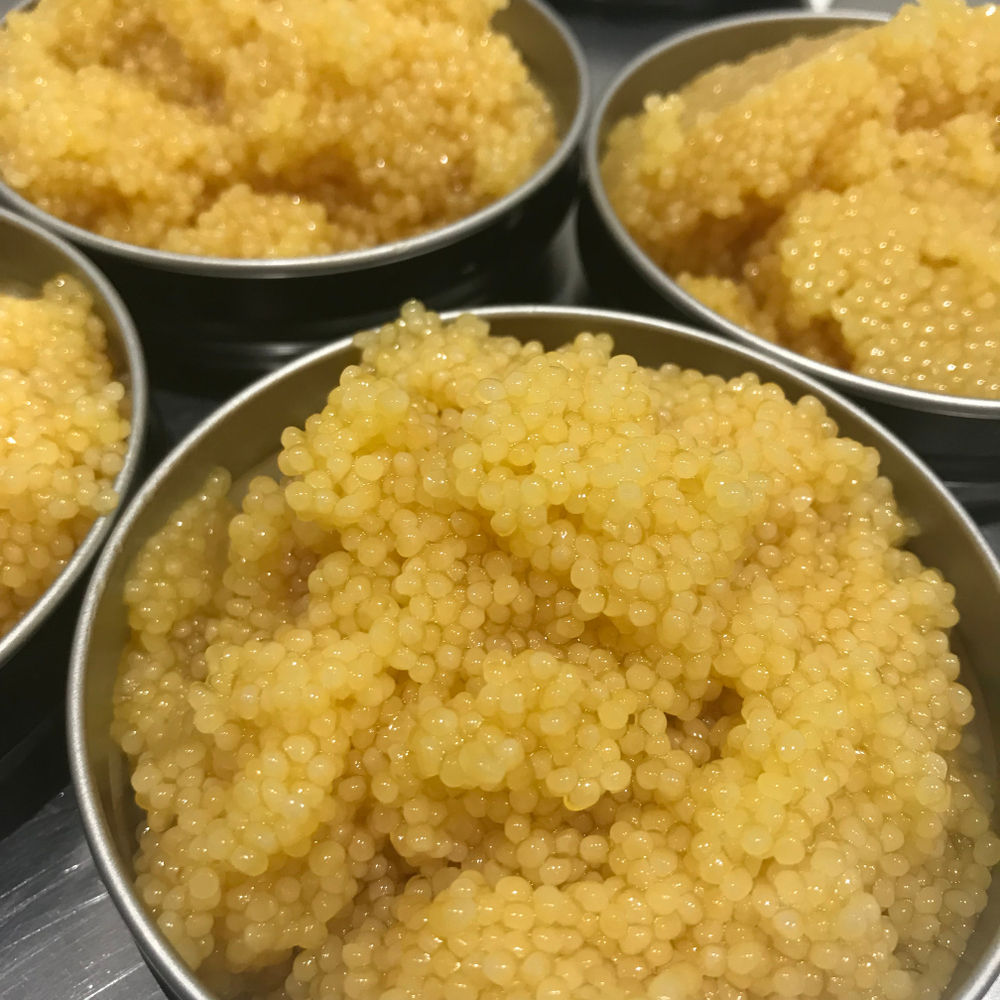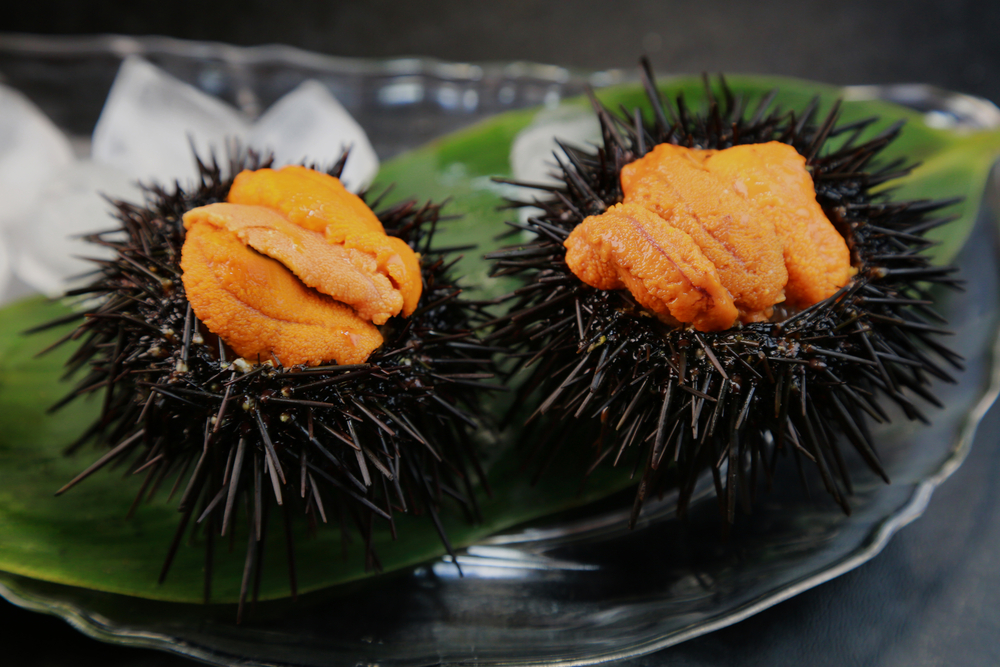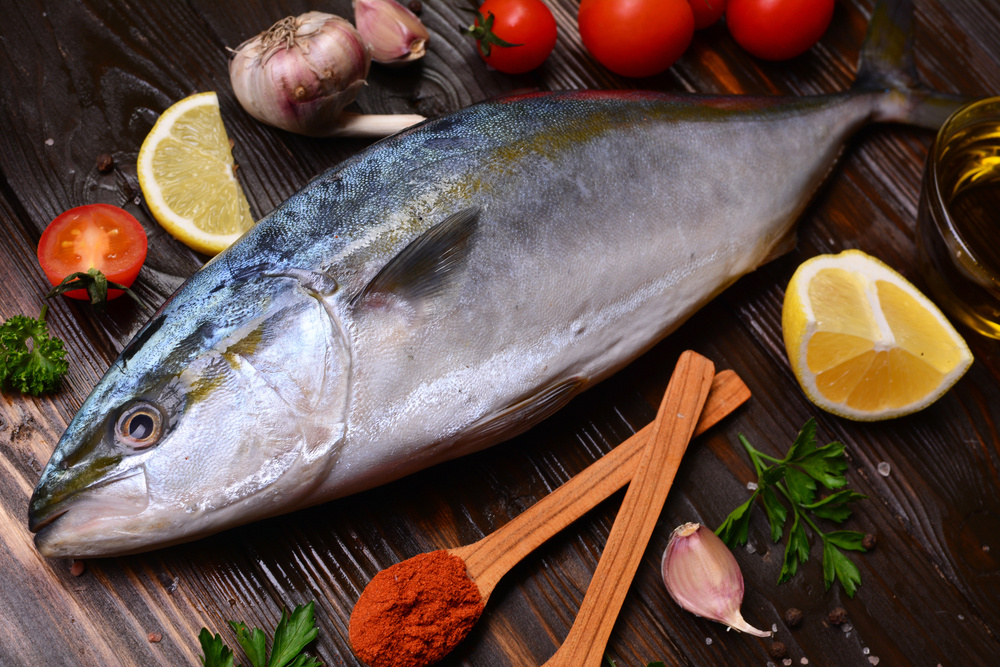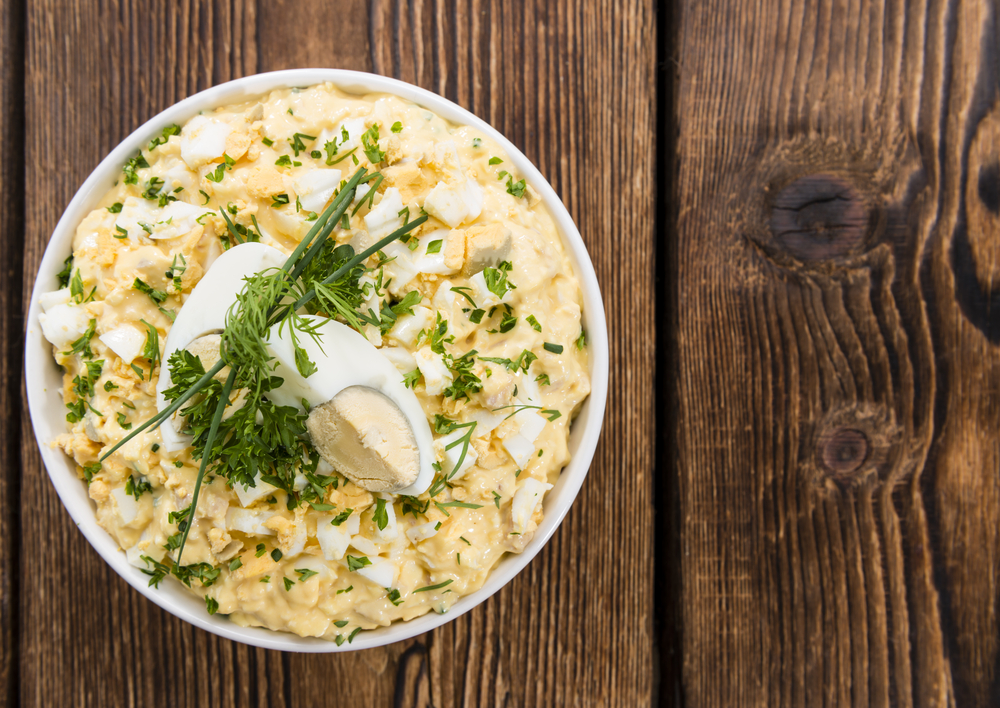Caviar is a delicacy that has been enjoyed for centuries by those who appreciate the finer things in life. It is a luxury food item that is often associated with high-end restaurants, extravagant parties, and wealthy individuals. But what does caviar taste like?
Caviar is made from the eggs of the sturgeon fish, and its flavor can be described as salty and briny with a hint of the sea. The texture of caviar is unique, with each egg popping in your mouth and releasing a smooth and buttery taste.
The flavor of caviar can vary depending on the type of sturgeon, the quality of the eggs, and the maturation process.
For those who have never tried caviar before, it can be a daunting experience. But understanding the taste and texture of caviar can help you appreciate this luxury food item.
In this article, we will explore what caviar tastes like, the different types of caviar, how to serve and eat caviar, and the health benefits of this delicacy.
Key Takeaways
- Caviar has a salty and briny taste with a hint of the sea.
- The texture of caviar is unique, with each egg popping in your mouth and releasing a smooth and buttery taste.
- Understanding the taste and texture of caviar can help you appreciate this luxury food item.
Understanding Caviar
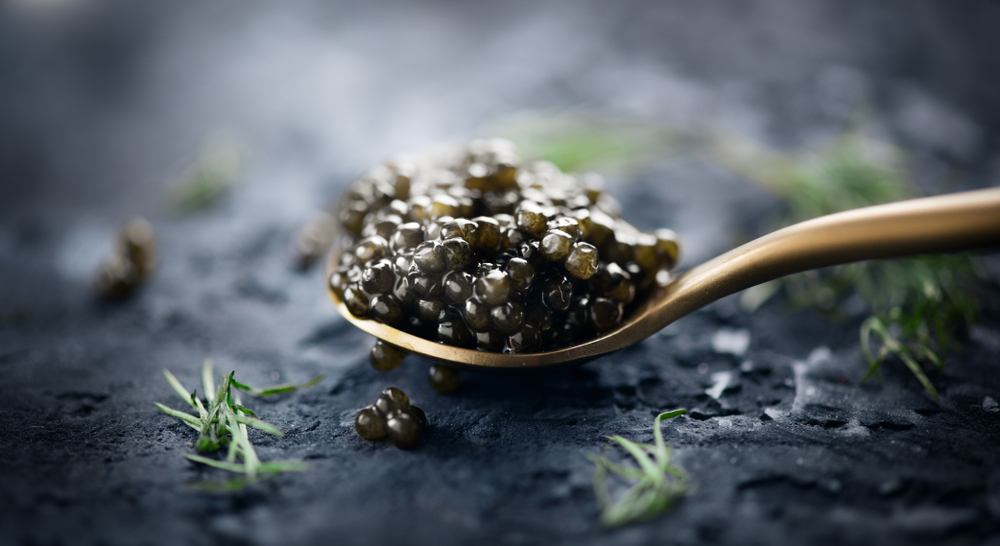
Caviar is a luxury food item that is highly prized for its unique taste and texture. It is a type of roe, which refers to the unfertilized eggs of fish. The most common types of fish used for caviar production are sturgeon, salmon, and trout.
Sturgeon is the most popular fish used for caviar production, and there are several species of sturgeon that produce different types of caviar.
The most famous and expensive caviar is Beluga caviar, which is made from the eggs of the Beluga sturgeon. Other popular types of caviar include Sevruga, Osetra, and Kaluga.
Caviar has a distinctive taste that is often described as salty and briny, with a hint of ocean flavor. The texture of caviar is also unique, with a firm outer layer that gives way to a soft, creamy center.
The quality of caviar can vary depending on factors such as the type of fish used, the age of the eggs, and the processing methods.
Beluga caviar is considered the most luxurious and expensive type of caviar, with a buttery, smooth flavor and large, delicate eggs.
Red caviar, which is made from the eggs of salmon, has a milder flavor and smaller, firmer eggs. Black caviar, which is made from the eggs of sturgeon, has a more intense flavor and larger eggs than red caviar.
Caviar is often served as a delicacy and is typically enjoyed on its own or with simple accompaniments such as crackers, bread, or blinis.
It is important to note that caviar is a perishable product and should be stored properly to maintain its quality.
Tasting Caviar
Tasting caviar is an experience that is unique and luxurious. The taste and texture of caviar can vary depending on the type and quality of the roe. Here are some things to keep in mind when tasting caviar:
The Taste and Texture
Caviar has a briny flavor that is often described as tasting like the ocean. It has a delicate texture that pops in your mouth, and a buttery richness that is both smooth and nutty.
The flavor of caviar can also be influenced by the type of fish the roe comes from, as well as the processing and aging techniques used.
Salty and Nutty
Caviar has a salty taste that is balanced by its nutty flavor. The saltiness of caviar can vary depending on the type and quality of the roe, with some varieties being more salty than others.
The nuttiness of caviar is often described as having a hint of hazelnut or walnut.
Tasting Caviar
When tasting caviar, it is important to use a clean spoon and to avoid using metal utensils, as they can affect the flavor of the roe.
The caviar should be served chilled, and can be paired with a variety of foods, such as blinis, toast points, or crème fraîche.
The Unique Flavor of Caviar
Caviar has a unique flavor that is unlike any other food. Its briny flavor and delicate texture make it a luxurious treat that is often reserved for special occasions.
The flavor of caviar can be enjoyed on its own, or paired with other foods to create a unique and memorable culinary experience.
In summary, tasting caviar is an experience that is both luxurious and unique. Its briny flavor and delicate texture make it a treat that is unlike any other food.
When tasting caviar, it is important to keep in mind the type and quality of the roe, as well as the processing and aging techniques used.
The Visual Appeal of Caviar
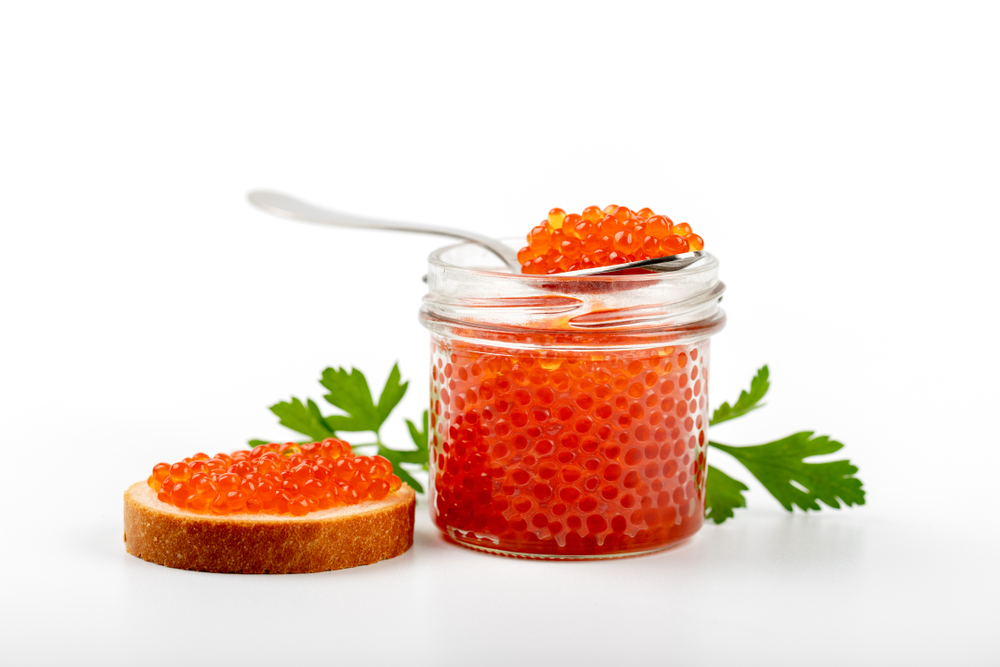
Caviar is a delicacy that is known for its luxurious taste and texture. However, it is not just the taste that makes caviar so special. Its visual appeal is also a significant factor that contributes to its popularity.
The appearance of caviar can vary depending on the type of fish it comes from. Generally, caviar ranges in color from brown to white, with some varieties having a golden or silver hue.
The color of caviar is determined by the type of fish it comes from, as well as the processing methods used.
In terms of texture, caviar is known for its small, delicate pearls that burst in the mouth. The size of the pearls can vary depending on the type of fish, but they are typically small and uniform in size.
The texture of caviar is an essential factor in its visual appeal, as the small pearls create a visually striking effect.
When it comes to serving caviar, presentation is key. Caviar is often served on a bed of ice, which not only keeps it fresh but also enhances its visual appeal.
The contrast between the dark pearls of caviar and the white ice creates a visually stunning effect that is sure to impress.
In conclusion, the visual appeal of caviar is just as important as its taste and texture. The color and texture of caviar create a visually stunning effect that is sure to impress.
When served on a bed of ice, caviar becomes even more visually appealing, making it the perfect addition to any luxurious meal.
Types of Caviar
Caviar is a delicacy that comes in different types, each with its unique taste, texture, and price. Here are some of the most common types of caviar:
Osetra Caviar
Osetra caviar is one of the most popular types of caviar. It comes from the Osetra sturgeon, which is native to the Caspian and Black Sea regions. Osetra caviar has a nutty and creamy flavor, and its eggs are medium-sized, ranging from light brown to dark brown in color.
The quality of Osetra caviar depends on its size, freshness, and how it is stored. High-quality Osetra caviar is often chilled or frozen to preserve its freshness.
Beluga Caviar
Beluga caviar is the most expensive type of caviar. It comes from the beluga sturgeon, which is native to the Caspian Sea. Beluga caviar has large, light grey eggs that are buttery and smooth, with a mild, sweet flavor. Due to its high price and rarity, beluga caviar is often reserved for special occasions and fine dining.
Paddlefish Caviar
Paddlefish caviar is a more affordable alternative to traditional caviar. It comes from the paddlefish, which is native to the Mississippi River and its tributaries.
Paddlefish caviar has small, dark grey eggs that have a mild, earthy flavor. It is often used as a substitute for traditional caviar in recipes.
Trout Caviar
Trout caviar is another affordable alternative to traditional caviar. It comes from freshwater trout and has small, orange eggs that have a delicate, slightly sweet flavor. Trout caviar is often used as a garnish or topping for dishes.
Red Caviar
Red caviar, also known as salmon roe, comes from the eggs of salmon. It has small, bright red eggs that have a salty, slightly sweet flavor. Red caviar is often used as a topping for sushi and other seafood dishes.
Sterlet Caviar
Sterlet caviar comes from the sterlet sturgeon, which is native to the Caspian and Black Sea regions. It has small, dark grey eggs that have a nutty, slightly sweet flavor. Sterlet caviar is often used as a garnish or topping for dishes.
Almas Caviar
Almas caviar is the rarest and most expensive caviar in the world. It comes from the eggs of the albino beluga sturgeon, which is native to the Caspian Sea.
Almas caviar has large, golden eggs that have a buttery, nutty flavor. It is often served on its own or with a simple accompaniment, such as toast points.
In summary, caviar comes in different types, each with its unique taste, texture, and price. The quality of caviar depends on its freshness, size, and how it is stored.
Whether you prefer traditional caviar or an alternative, there is a type of caviar that will suit your taste and budget.
Serving and Eating Caviar

Caviar is a delicacy that is often served as an appetizer or as a topping for various dishes. It is usually served chilled and accompanied by a few traditional sides. Here are some tips on how to serve and eat caviar like a pro:
Spoon
When serving caviar, it is important to use a non-metallic spoon, as metal can affect the taste of the caviar. Traditionally, caviar is served with a special spoon made of bone or mother of pearl. These spoons are gentle on the delicate eggs and do not interfere with the taste.
Blinis
Blinis are Russian pancakes that are often served with caviar. They are a perfect accompaniment to the rich and salty taste of the caviar. Blinis can be made ahead of time and reheated in the oven just before serving.
Toppings
Caviar can be enjoyed on its own or with a few toppings. Some popular toppings include chopped onions, chives, and crème fraiche. These toppings help to balance the saltiness of the caviar and add a burst of flavor.
Champagne and Wine
Caviar is often paired with champagne or white wine. The effervescence of the champagne helps to cleanse the palate between bites of caviar, while the acidity of the wine complements the salty taste of the caviar.
Eating Caviar
When eating caviar, it is important to savor the flavor and texture. Caviar should be eaten in small bites, allowing the eggs to burst in the mouth and release their rich, buttery flavor. It is also important not to chew the caviar, as this can cause the flavor to be lost.
Raw Oysters
Caviar is often compared to raw oysters in terms of taste and texture. If you enjoy the taste of raw oysters, chances are you will enjoy the taste of caviar as well.
Overall, caviar is a luxurious delicacy that should be enjoyed in moderation. With the right accompaniments and a few tips on how to serve and eat it, caviar can be a truly memorable experience.
Caviar Production and Sustainability
Caviar production is a delicate process that requires a lot of time and effort. The harvesting process involves removing the eggs from the sturgeon, which can be done either by killing the fish or by extracting the eggs surgically.
The latter method is considered more humane and is becoming increasingly popular.
One of the main concerns with caviar production is sustainability. Overfishing and the destruction of sturgeon habitats have led to a decline in sturgeon populations and an increase in the cost of caviar.
To address this issue, many caviar producers are now focusing on sustainable practices, such as farming sturgeon in controlled environments.
Another important factor in caviar production is the age of the sturgeon. The older the sturgeon, the larger and more flavorful the eggs will be.
However, older sturgeon are also less fertile, which can impact the sustainability of the industry. To balance these factors, many caviar producers harvest eggs from sturgeon at various ages to ensure a consistent supply of high-quality caviar.
Salt is also a crucial component of caviar production. Salt is used to cure the eggs and enhance their flavor. The amount of salt used can vary depending on the producer and the type of caviar being produced.
Some caviar varieties are saltier than others, so it’s important to choose a caviar that suits your taste preferences.
In conclusion, caviar production is a complex process that requires careful attention to sustainability, age, and salt content.
By using sustainable practices and focusing on quality, caviar producers can ensure a consistent supply of high-quality caviar for years to come.
Storing Caviar
Caviar is a luxury food item that requires proper storage to maintain its freshness and taste. The shelf life of caviar depends on various factors, including the type of caviar, packaging, and storage conditions. Here are some tips for storing caviar:
Refrigerated
Caviar is very perishable and needs to be stored in the coldest part of the refrigerator. The ideal temperature for storing caviar is between 28 to 30 F.
However, most household refrigerators won’t reach this temperature, so place the caviar in the coldest part, which is usually the very bottom drawer. Once opened, caviar will only last about three days, so it’s essential to consume it quickly.
If kept in an unopened vacuum-sealed container in a household refrigerator, most caviars last for four to six weeks. It should be stored just around the freezing point but not fully frozen.
Anywhere between 28 and 32 degrees is ideal, so determine the coldest area of your refrigerator and designate it as your caviar storage spot.
To preserve the unique flavor of each type, store them separately. If you have multiple types of caviar, use separate containers for each type.
Use a non-metal spoon when serving caviar to avoid affecting the flavor. Metal can react with caviar, altering its taste and texture.
If the caviar is not canned, then it can be stored in two different ways. If it is frozen, then it can be stored in a residential freezer for up to three months until it starts going bad.
It’s essential to thaw the caviar slowly in the refrigerator before serving to avoid any damage to the delicate eggs.
Overall, caviar is a delicate and perishable food item that requires proper storage to maintain its freshness and taste. By following these tips, you can enjoy the unique flavor and texture of caviar for longer.
Health and Nutritional Benefits of Caviar
Caviar is a luxurious seafood delicacy that is highly valued for its exquisite taste and texture. However, it is not only a delicacy but also a nutrient-dense food that is packed with various health benefits. Here are some of the health and nutritional benefits of caviar:
Nutritional Value
Caviar is rich in a wide range of essential nutrients that are vital for maintaining good health. It is an excellent source of high-quality protein, which is essential for building and repairing tissues in the body.
Additionally, caviar is also rich in healthy fats, including omega-3 fatty acids, which are critical for maintaining heart health and reducing inflammation in the body.
Caviar is also an excellent source of vitamins and minerals. It is particularly high in vitamin B12, which is essential for maintaining healthy nerve cells and red blood cells. Other essential vitamins found in caviar include vitamins A and D, which are important for maintaining healthy skin, eyesight, and bones.
Caviar also contains minerals such as iron and calcium, which are essential for maintaining healthy bones, muscles, and blood.
Health Benefits
Caviar is believed to offer numerous health benefits due to its high nutritional value. Some of the potential health benefits of caviar include:
- Boosts Brain Function: Caviar is rich in omega-3 fatty acids, which have been shown to improve brain function and memory. Additionally, caviar is also high in choline, a nutrient that is essential for brain development and function.
- Supports Heart Health: The omega-3 fatty acids found in caviar can help reduce inflammation in the body, which is a leading cause of heart disease. Additionally, caviar is also low in cholesterol, making it a heart-healthy food.
- Promotes Healthy Skin: The vitamins and minerals found in caviar, such as vitamins A and D, can help promote healthy skin, reduce the signs of aging, and improve skin elasticity.
- Boosts Immune System: Caviar is rich in antioxidants, which can help boost the immune system and protect the body against free radical damage.
Overall, caviar is a nutrient-dense food that offers numerous health benefits. While it may be a luxury food item, incorporating caviar into your diet can provide your body with essential nutrients and potentially improve your overall health and well-being.
The Luxury of Caviar
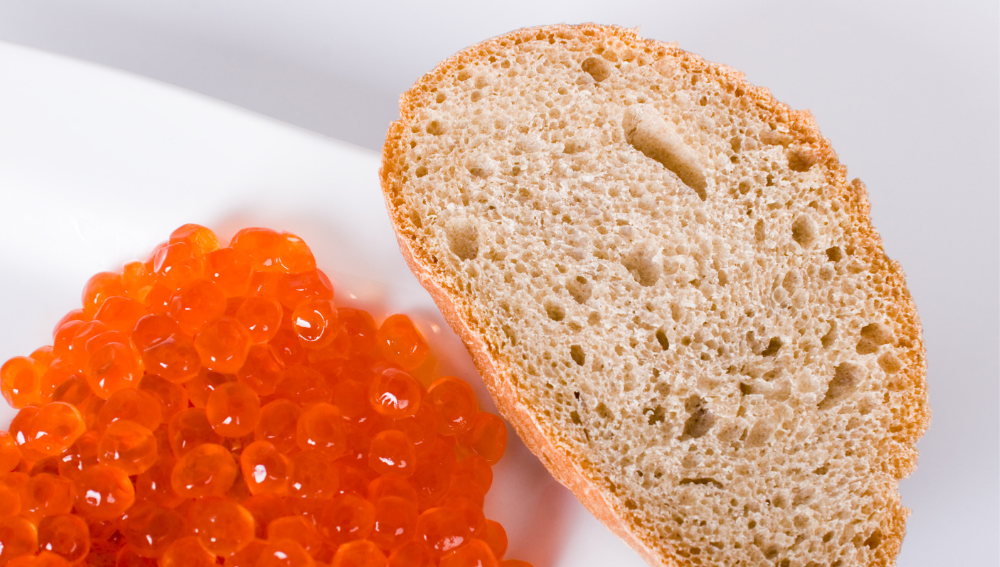
Caviar is a luxury food item that has been enjoyed by the wealthy for centuries. It is often associated with elegance and sophistication, and its golden color and rich flavor only add to its allure.
Caviar is made from the unfertilized eggs of sturgeon, a type of fish found in the Caspian Sea and other bodies of water.
The process of harvesting and preparing caviar is time-consuming and labor-intensive, which contributes to its high price tag.
The eggs must be carefully extracted from the fish, washed, and sorted by size and quality. The best caviar is often considered to come from the Caspian Sea, where the sturgeon population is most abundant.
When it comes to taste, caviar is often described as having a slightly salty and fishy flavor, but this can vary depending on the type and quality of the caviar.
Some varieties are known for their nutty or buttery taste, while others are more intense and briny. Regardless of the specific flavor, caviar is always a delicacy that is meant to be savored slowly.
In addition to its taste, caviar is also prized for its luxurious reputation. It is often served at high-end events and is a symbol of wealth and sophistication.
The fact that it is so expensive only adds to its appeal, as it is seen as a rare and exclusive treat.
Overall, caviar is a food item that is steeped in tradition and luxury. Its rich flavor and elegant reputation make it a sought-after delicacy that is enjoyed by many around the world.
Aromas of Caviar
Caviar is a delicacy that has been enjoyed by many for centuries. It is known for its unique flavor and texture, as well as its high price tag. However, one aspect that is often overlooked is the aroma of caviar.
When it comes to the aroma of caviar, there are a few things to keep in mind. First and foremost, caviar should not have a strong fishy smell.
While it is true that caviar is made from fish eggs, a strong fishy smell can be an indication that the caviar is not fresh or has been improperly stored.
Instead, the aroma of caviar should be earthy and slightly nutty. This is due to the fact that the fish eggs are cured with salt, which brings out these flavors.
Some caviar may also have a slightly metallic aroma, which is a result of the tin or other container it is stored in.
It is important to note that the aroma of caviar can vary depending on the type of fish it comes from. For example, caviar from sturgeon may have a more intense aroma than caviar from salmon or trout.
However, regardless of the type of fish, the aroma should be pleasant and not overpowering.
In conclusion, the aroma of caviar is an important aspect of its overall flavor profile. It should be earthy and slightly nutty, with no strong fishy smell.
The type of fish can also affect the aroma, but this should not detract from the overall enjoyment of the caviar.
Frequently Asked Questions
What are the different types of caviar?
Caviar comes from the roe of sturgeon fish. The different types of caviar are categorized based on the species of sturgeon they come from.
Some of the most popular types of caviar include Beluga, Ossetra, Kaluga, Sevruga, and American. Each type has its own unique flavor and texture.
What is the texture of caviar like?
Caviar has a unique texture that is often described as “poppy” or “crunchy.” The eggs are delicate and burst in your mouth, releasing their flavor. The texture can vary depending on the type of caviar and how it is prepared.
How does caviar taste?
Caviar has a distinct flavor that is often described as salty and briny, with a hint of sweetness. The taste can vary depending on the type of caviar and how it is prepared. Some people also describe caviar as having a buttery or nutty flavor.
What is the best way to order caviar?
When ordering caviar, it is important to choose a reputable supplier to ensure that you are getting high-quality caviar.
It is also important to consider the type of caviar and how it is prepared. Some people prefer to eat caviar on its own, while others enjoy it as a garnish or topping on other dishes.
Why is caviar considered a delicacy?
Caviar is considered a delicacy because it is rare and expensive. It is also associated with luxury and high-end dining. Caviar was historically reserved for royalty and the wealthy, which added to its exclusivity.
What is the history behind eating caviar?
Caviar has been enjoyed for centuries and has a rich history. It was first consumed by ancient Greeks and Romans, and was considered a delicacy in Russia and Persia.
Caviar became popular in Europe in the 19th century, and was often served at high-end restaurants and banquets. Today, caviar is enjoyed around the world and is still considered a luxury food.


